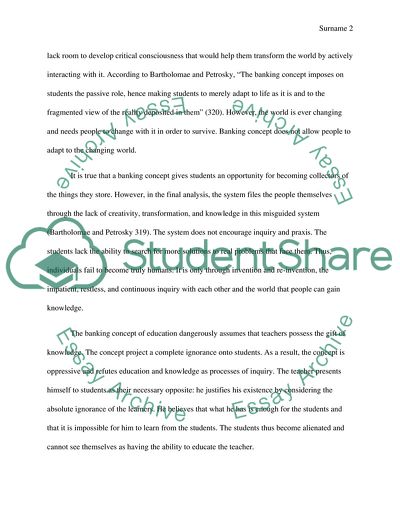Cite this document
(The Banking Concept of Education Kills Creativity and Liberty Term Paper, n.d.)
The Banking Concept of Education Kills Creativity and Liberty Term Paper. https://studentshare.org/education/1857146-should-we-enhance-the-banking-concept-of-education
The Banking Concept of Education Kills Creativity and Liberty Term Paper. https://studentshare.org/education/1857146-should-we-enhance-the-banking-concept-of-education
(The Banking Concept of Education Kills Creativity and Liberty Term Paper)
The Banking Concept of Education Kills Creativity and Liberty Term Paper. https://studentshare.org/education/1857146-should-we-enhance-the-banking-concept-of-education.
The Banking Concept of Education Kills Creativity and Liberty Term Paper. https://studentshare.org/education/1857146-should-we-enhance-the-banking-concept-of-education.
“The Banking Concept of Education Kills Creativity and Liberty Term Paper”. https://studentshare.org/education/1857146-should-we-enhance-the-banking-concept-of-education.


